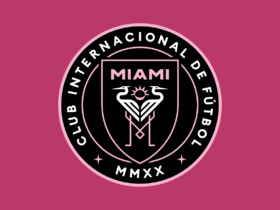Six organizational development tasks
Editor’s Note: This is the second installment of an ongoing series surrounding what it takes to move from a relatively small, micro-business to a more robust, larger organization. Each article explores a different aspect of that journey.
In the 1st installment, I discussed the initial phases of making the transition from a business in its infancy to becoming a sustainable business. We discussed the challenges faced and the growing pains experienced by many businesses in that part of the growth curve.
We will identify and help you better understand the six critical organizational development tasks in this issue. These items are essential when the organization is experiencing fast growth and doesn’t have the luxury of a well-seasoned management team.
A strategic view of the situation must begin to shape and harness the resources that can take the business through future phases. This process will involve:
- Identifying a market niche
- Appropriately expanding the product and service mix
- Acquiring or building additional resources
- Developing and implementing a system of back-office functions that support production
- Developing and supporting the proper management systems
- Creating and maintaining a corporate culture that supports the current initiatives and future growth
Task one: One of the subjects we have covered in articles and sessions is the need to become a well-known fixture within a market niche. Identifying and defining what that market niche or market segmentation strategy will be going forward is critical.
The firm must look to stake out or capture a sustainable competitive advantage that will grow over time. If a firm is fortunate, it selects an opportunity in an area with little or no current competition.
It is a tremendous advantage to be the “first kid on the block” to do something in some instances. Not only can you potentially fly below the competition’s radar for a while, but you can also develop momentum from the public.
Suppose the “cost of entry” for competitors is high enough. In that case, you can discourage competition from coming onto the scene until your firm starts to hit a capacity “pinch point.” An old expression from the oil and gas industry says, “Until the first pipeline is full, someone can’t justify the high cost of building a second line that will also be running at less than capacity.” There is a cautionary tale to be noted. Changing market focus without adequate support from the customer base can be a costly mistake. Think of the number of firms that have over-expanded their product or service lines. They are seen as abandoning their sweet spot in the market. They have lost focus by trying to become everything to everyone.
Task two: The second area is appropriately expanding the product and service mix to meet that market niche. This challenge includes the design of a product and the service delivery aspect.
To be successful in this realm is dependent on effective strategic market planning. Understand your desired potential customers and prospects. Learn what want(s) and need(s) exist, how they like to buy or purchase the product or service under consideration and what can tap into perceived value.
Task three: The third element involves acquiring or building the additional internal and external resources that adequately meet the expectations of that market niche.
It is possible that a firm has identified the right market opportunities and built or packaged the right product for that line of business and yet not be able to compete in it effectively. This shortfall may be caused by inadequate financial resources, either from a cash flow or capital point of view, or insufficient production and support. This shortfall can be in physical space and equipment or people, whether staff or management positions.
Carefully balance the need to manage and invest in new people and equipment to support the current demand levels with the projected growth needs. For example, poor investment decisions in infrastructure will cause the firm to have to go into the market for additional physical space or equipment prematurely when this doesn’t happen well.
Since this change usually negatively impacts the flow of the operation, this can be the equivalent of “buying something twice instead of buying it right the first time.” This situation gets tricky because the firm must have the financial strength and cash flow resources to avoid becoming overextended during this period of underestimated rapid expansion.
Task four: The fourth area of concern is developing and implementing a system of back-office functions and systems to support day-to-day production. This area covers the aspects of accounting and payroll, advertising and marketing support, customer service, sales production and human resources management (that would show up as recruiting and training) to execute the strategy adequately.
Author Eric Flamholtz, Ph.D., described these operating systems as “organizational plumbing.” While it certainly isn’t a sexy area to talk about, inadequate “plumbing” can be a tremendous frustration for internal staff and customers alike when trying to get answers quickly.
Task five: The fifth area that must be touched on, especially in larger firms, is developing and supporting the proper management systems. These are the pillars that will need to support the business long-term. These traditional areas of planning, organizing, scheduling, budgeting, contingency planning, etc. provide management oversight and control. Developing a planning system and a management-development system would typically fall into this area.
This area includes things like who reports to whom (organizational structure and chain of command) and how the workflow is organized. Preparing the next generation of leaders and managers to run the business is planned. Control aspects get addressed within this item. Processes that define items such as budget, goals, reward systems and performance appraisal need to be agreed upon and implemented.
Task six: The sixth area is creating and maintaining an agreed-upon corporate culture that supports the current initiatives and future growth. As we have discussed in other articles, establishing corporate values that are well-publicized and shared guides people’s behavior.
Values can speak to how the organization wants to operate even “when no one is looking.” Well-constructed values typically define expectations and relationships between and among employees, customers, suppliers, stakeholders, partners, the community, and any regulators as appropriate.
The culture also speaks to all the unwritten rules, norms and expectations that play out as “that’s just the way we do things around here.” When carefully crafted and managed, it can profoundly impact both the people inside and outside the firm or organization. It can communicate, “This is what we stand for, and this is what we won’t fall for.”
Studies have shown that whenever most people in an organization believe their top leaders are honest and adhere to very high ethical standards, they too will behave that way at work. When they believe that top managers say one thing but do another in terms of ethics and honesty, they will slip and behave in a consistent way with what they perceive. It is almost like them saying to themselves, “If top management is going to get theirs, I may as well take mine.”
These six areas are critical to the development of a firm as it progresses along the growth curve and must become intentionally integrated or symbiotic. They must build on each other. Similar to Situational Leadership, where the leaders’ style must flex to meet reality, these areas will need attention based on the organization’s challenges at any given time.
In future installments, we will further explore the predictable stages of organizational growth, discuss developmental items and tactics, explain and assess growing pains and plan the organizational transitions. Watch for the next installment.










